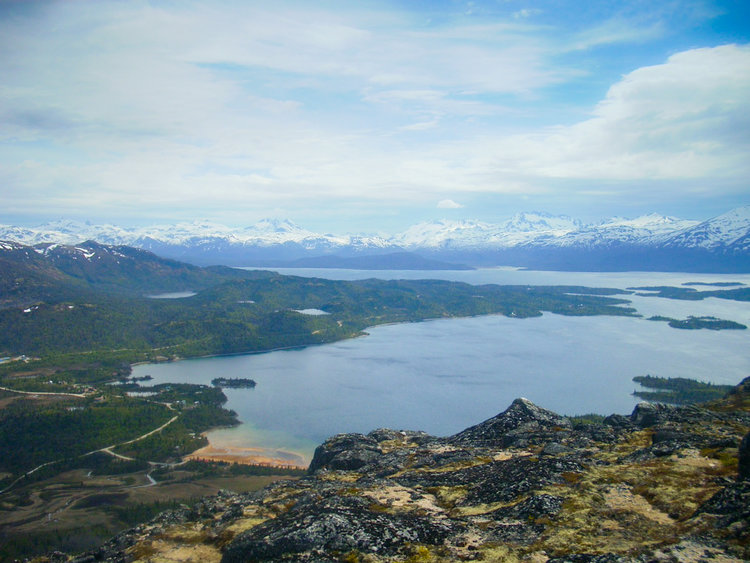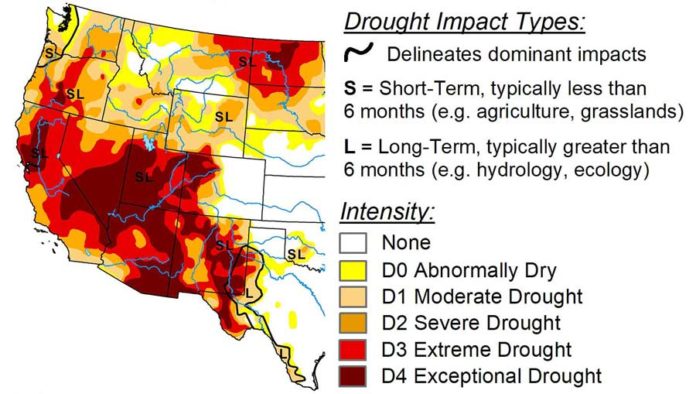Welcome to the latest installment of the Wednesday Wake-Up Call, a roundup of the most pressing conservation issues important to anglers. Working with our friends at Trout Unlimited, Backcountry Hunters & Anglers, the Theodore Roosevelt Conservation Partnership, The Everglades Foundation, Captains for Clean Water, Bullsugar.org, and Conservation Hawks (among others), we’ll make sure you’ve got the information you need to understand the issues and form solid opinions.
If you know of an important issue–whether it’s national or local–that anglers should be paying attention to, comment below, and we’ll check it out!
1. Western U.S. Faces Historic Drought
A broad swath of the West is in the midst of severe drought, threatening rivers and adding to an already high likelihood of wildfires. The Southwest is particularly dry, with the Colorado River near Cameo, Colorado–just upstream from Grand Junction–is running at 5700 cfs, less than half of the average flow of 1350 cfs for this date. Meanwhile, the Klamath River basin in Northern California and Oregon has been experiencing drought-related fish kills since early May. According to one BYU professor, Utah faces the “worst drought period since Middle Ages.” (See the video above for more on Utah’s water woes.)
For More Information:
2. Alaska Native Corporation Deals Blow to Pebble Mine

Late last month, shareholders of Pedro Bay Corp., an Alaska Native group that owns land near Bristol Bay, voted to let the Conservation Fund, an environmental nonprofit organization, buy conservation easements on more than 44,000 acres and make the land off limits to future development — including the mining road for the proposed Pebble Mine. This could be a big step toward permanent protections for the area that the mine has targeted for development.
Click here for more information of Alaska Daily News and The Washington Post.
3. Brown Trout Decline Across Southwestern Montana Rivers

Photo by Wade Fellin, Big Hole Lodge
Writing in the Billings Gazette, Michael Cast describes a troubling trend in the legendary trout rivers of southwestern Montana:
In the Big Hole’s most popular section, from Melrose to Brownes Bridge, brown trout numbers are the lowest they’ve been in 50 years of surveys. . . . In the last six years, the Ruby River has dropped from 1,500 brown trout per mile to historic lows of 600-700 in the upper tail waters. The Beaverhead River has dropped from 2,000 to 1,000. . . . In the upper Clark Fork’s most historically fishy section near the confluence with Warm Springs Creek, the population of trout over 10 inches has steadily declined since 2013, from 1,800 fish to an all-time low of 82 in 2019. . . . In the Jefferson River’s lower survey section, brown trout numbers aren’t low overall, but the number of younger, 2-year-old fish is the lowest it’s been in 15 years, at less than 50 fish per mile.
Fisheries biologists are still unsure what’s causing the problems, and they are focused on coming up with solutions. Stay tuned . . . .
Click here for the full story.
4. A Push to Remove More Maine Dams to Help Salmon

Photo by Jen Noll/Maine DMR
The removal of the Edwards Dam on Maine’s Kennebec River in 1999 kicked off a movement across the country to restore historically interrupted upstream access to anadromous species, especially salmon. The latest targets are four more Kennebec obstructions–Lockwood Dam, Hydro Kennebec Dam, Shawmut Dam, and Weston Dam. A coalition of conservation organizations, comprising the Atlantic Salmon Federation, Conservation Law Foundation, Maine Rivers and Natural Resources Council of Maine plans to sue the dams’ owners for killing Atlantic salmon.
“Right now they are operating those facilities in violation of the Endangered Species Act, because they don’t have authorization to kill Atlantic salmon, which is what their dams do,” said Sean Mahoney, executive vice president of the Conservation Law Foundation. “So they need to apply to get that authority or they need to remove the cause of the killing or taking of Atlantic salmon, which are the four dams.”
Click here for the full story.
5. Other Important Stories
Credit: Source link































